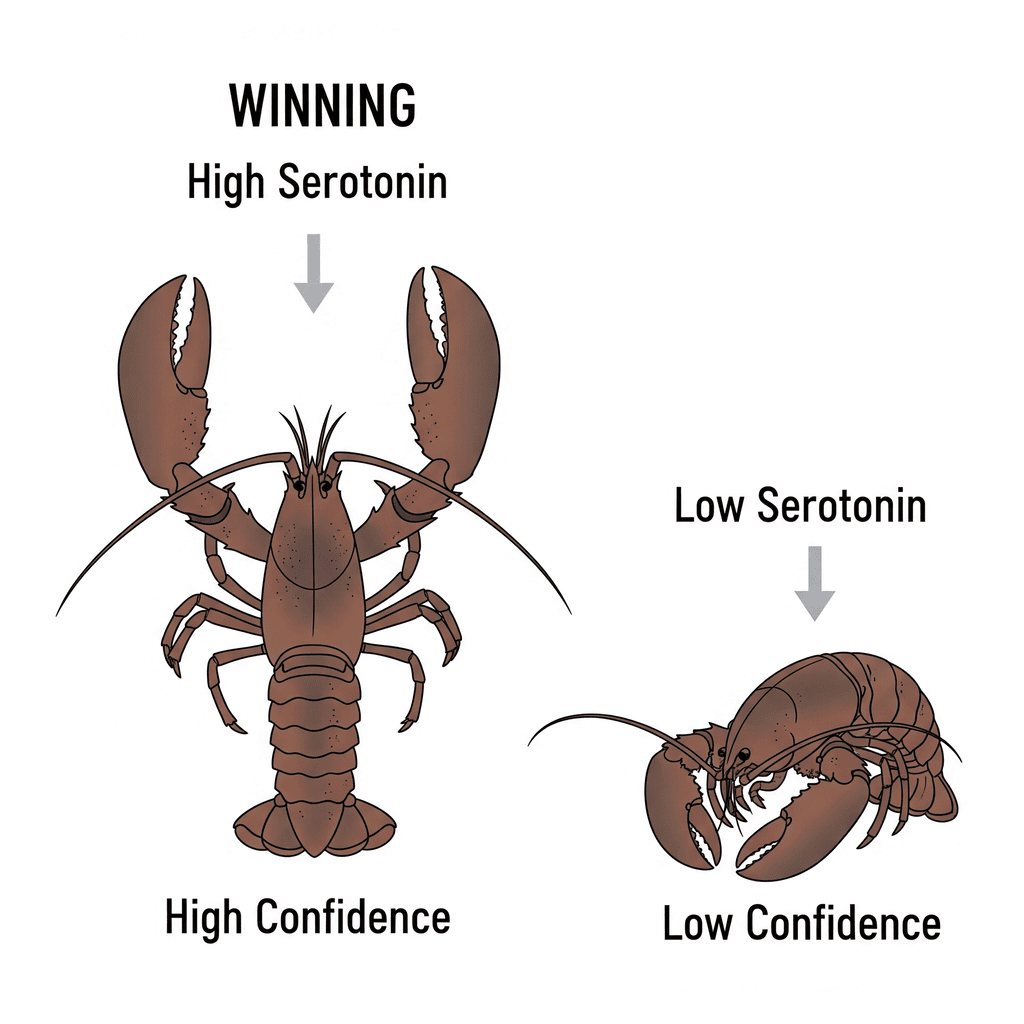Every day, we face two fundamental forces that shape reality: Order and Chaos. Order is structure, predictability, and safety. It is your work schedule, traffic laws, and the soothing morning routine. On the other hand, there is Chaos. It is uncertainty, potential, and sometimes, terror. It is the unexpected layoff, a disease diagnosis, or a global crisis shaking the world. Too much order makes life rigid and boring; too much chaos makes life impossible to live.
In his phenomenal book, 12 Rules for Life: An Antidote to Chaos, clinical psychologist Jordan B. Peterson does not offer easy solutions or shallow positive affirmations. Instead, he presents a strong argument that the path to a meaningful life is not by avoiding suffering or chaos, but by facing it voluntarily and bravely. Peterson argues that true meaning is found at the border between order and chaos.
This article will dissect four of his twelve fundamental rules. This is not just a summary, but an invitation to understand a framework of thinking that can change the way you view responsibility, truth, and your own life purpose.
Rule #1: Stand Up Straight with Your Shoulders Back – The Hidden Power of a Lobster
Why does Peterson start with a rule that sounds like advice from a grandfather? Because physical posture is a direct reflection of our psychological condition. To explain this, he uses a surprising analogy: the lobster. Lobsters, creatures with a nervous system over 350 million years old, have a clear social hierarchy. When two lobsters fight for territory, the winner stands tall, while the loser hunches and retreats.
This phenomenon is closely related to brain chemistry. The winning lobster receives a surge of serotonin, making it more confident and ready to face the next challenge. Conversely, the losing lobster experiences a drop in serotonin, making it more anxious and prone to avoid conflict. Humans, with all their complexity, have ancient neural circuits that are very similar. When we slouch, look down, and speak hesitantly, we unconsciously send signals of defeat to ourselves and the world.
As a result, our brains respond by limiting serotonin, making us more vulnerable to stress and negative emotions. By consciously deciding to “stand up straight with your shoulders back,” we do more than just improve our posture. We trigger a positive feedback loop. A confident posture sends signals to the brain to feel more competent, which in turn encourages bolder actions. This is the first step to voluntarily facing the chaos of life, not as a victim, but as a brave participant.
However, adopting this posture is not just about the physical. The complete framework for applying this mental posture amid failure and uncertainty is discussed in specific steps in the book, including how to build it from scratch.
Rule #2: Treat Yourself Like Someone You Are Responsible for Helping – The Paradox of Caring
Notice a strange paradox in human behavior. If a doctor prescribes medicine for your pet dog, you are likely to give it diligently and on time. However, statistics show that a third of patients never even fill prescriptions for themselves. Why are we so much more caring and responsible toward others (or even pets) than toward ourselves?
Peterson argues that this stems from our awareness of our own shortcomings and failures. We know every mistake, every small lie, and every shortcut we have ever taken. This awareness can create a deep sense of disgust or unworthiness, making us unconsciously feel undeserving of care and kindness. We judge ourselves so harshly that we often sabotage our own well-being.

This rule invites us to break free from that trap. Treat yourself as if you are someone valuable, someone you are responsible for helping. This means taking responsibility for your health, career, and personal development with the same seriousness as when you help someone you love. It’s not about selfishness, but about recognizing that you are the primary instrument you have for interacting with the world. A damaged instrument cannot function properly, let alone help others.
However, there are three common psychological mistakes that often trap us in this cycle of self-sabotage, which are thoroughly dissected in our summary at MentorBuku, including how to identify and overcome them. [Internal Link to: Article on the importance of positive self-talk]
Rule #3: Pursue What Is Meaningful, Not What Is Expedient – The Foundation of a True Life
In a world full of distractions and instant gratification, it’s very easy to choose the “expedient” path. This path is about avoiding conflict, postponing responsibility, and seeking short-term pleasure. Although it may seem easy at first, this path will ultimately lead us to emptiness and despair. Peterson offers a much more powerful alternative: pursue what is meaningful.
Meaning, according to him, is not the same as happiness. Happiness often comes and goes, is temporary, and cannot be relied upon as a compass for life. Meaning, on the other hand, is something deeper. It is the feeling that your life has a higher purpose, even in the midst of suffering. Meaning is the best antidote to chaos and existential suffering. Meaning is not found by avoiding burdens, but by voluntarily shouldering the right burden.
This is a fundamental paradigm shift. Instead of asking, “What can make me happy right now?”, ask, “What responsibility can I take on to make things better?” When you voluntarily face problems, fix what is broken around you, and strive for a noble goal, you will find that the suffering in life becomes bearable, even meaningful [1]. This is the essence of becoming the hero in your own life story.
Advanced techniques for identifying your personal ‘meaning’, including guidelines for distinguishing it from shallow goals and practical examples, are part of the exclusive insights we have prepared at MentorBuku.
Read also : The Magic of Thinking Big by David J. Schwartz
Rule #4: Tell the Truth, or at Least, Don’t Lie – Truth as a Compass
Lies, no matter how small, damage the most vital instrument we have for navigating the world: our perception. Every time we tell a lie, we deliberately distort reality. If done repeatedly, we build a fictional world on a fragile foundation. When a real crisis comes—and it inevitably will—that fictional structure will collapse, leaving us powerless.
Peterson distinguishes between “telling the truth” and “not lying.” Telling the absolute truth may be difficult, because we do not always know the whole truth. However, we almost always know when we are lying. Therefore, the minimum commitment is to stop saying things we know are false. Stop saying and doing things that make our inner selves weak and ashamed.

This simple act of not lying has an extraordinary effect. It cleanses our minds and speech from falsehood. It forces us to rely on what we truly believe, which in turn strengthens our character. In this framework, truth is not an abstract moral concept, but a practical tool for survival. It is a compass that allows us to walk through the fog of chaos without getting lost. By speaking honestly, we align our actions with reality, which is the only way to truly become strong.
Read also : Traffic Secrets by Russell Brunson
Peterson examines the impact of ‘white lies’ versus ‘black lies’ and provides specific strategies for building integrity through radical honesty, which we have summarized in depth on our platform. [Internal Link to: Article on assertive communication techniques]
From Insight to Transformation: This Is Just the Beginning
The four rules we have explored—standing up straight, caring for yourself, pursuing meaning, and telling the truth—are not just a checklist. They are parts of an interconnected system for facing reality in its entirety. They are an invitation to stop being a victim of circumstances and start becoming the architect of a meaningful life, a life strong enough to withstand the inevitable storms of chaos.
The book 12 Rules for Life offers eight more rules, each equally powerful, with in-depth explanations of the psychology, mythology, and philosophy behind them. Understanding these concepts is a crucial first step. However, the real power comes from consistent application.
You’ve just seen the foundation. These concepts are only the tip of the iceberg of what this book offers. How do you apply them step by step, avoid common pitfalls, and integrate them into your strategy? All those answers are inside.
Sign Up and Get Free Access at MentorBuku Now!